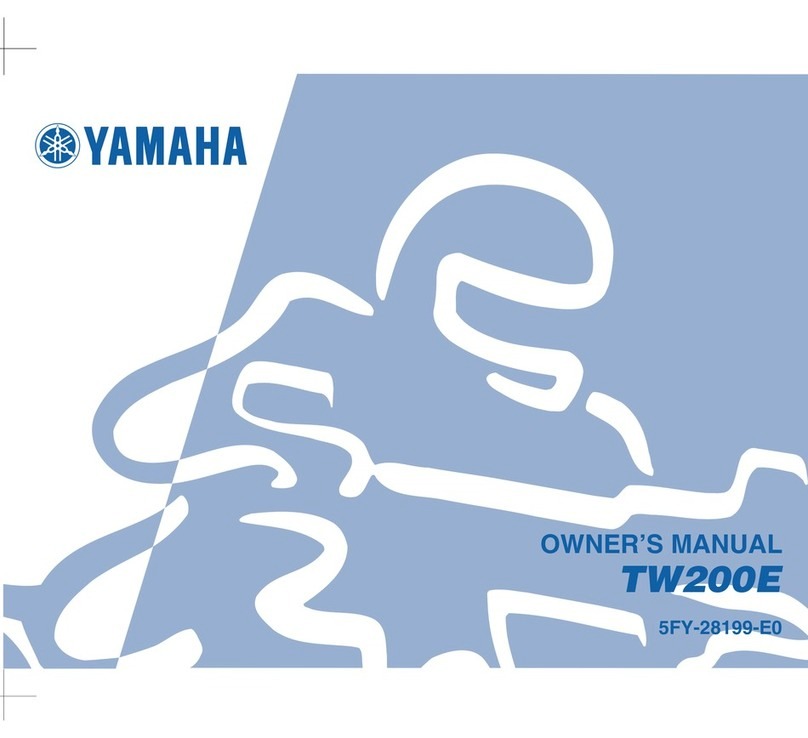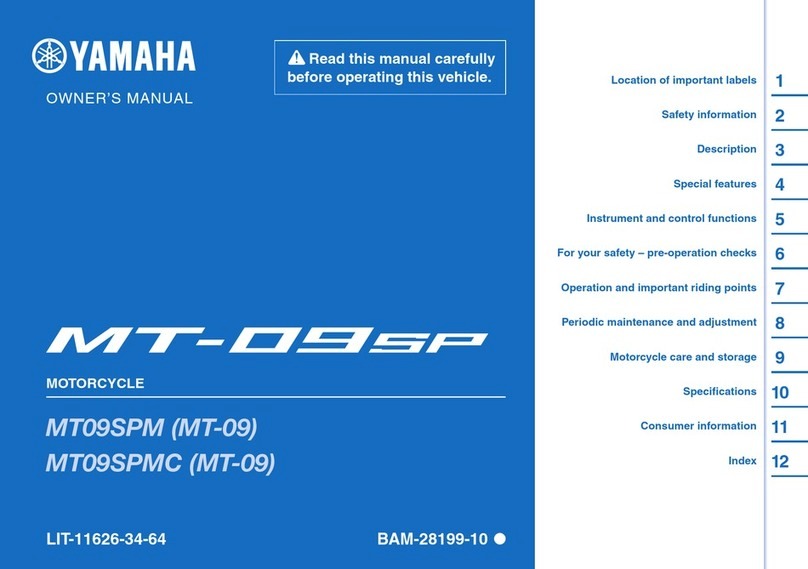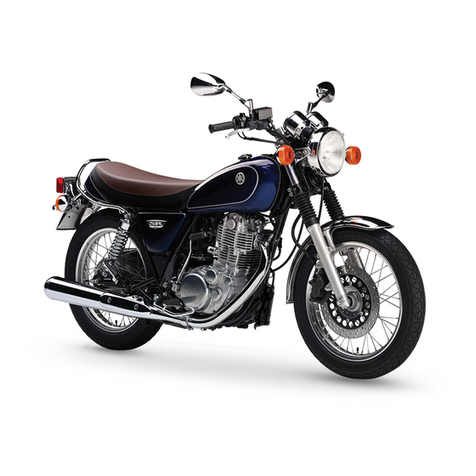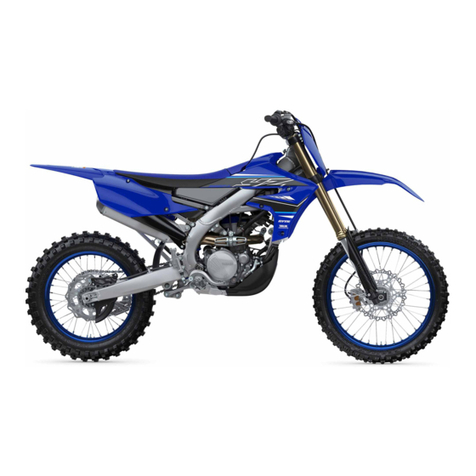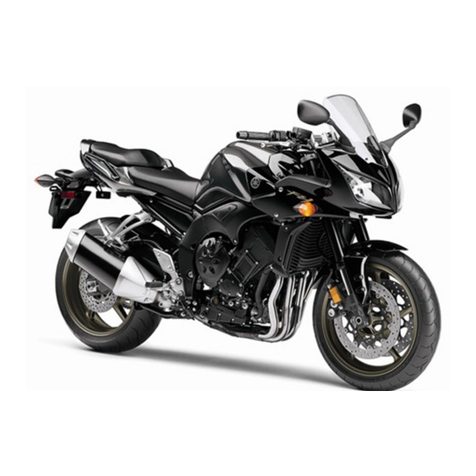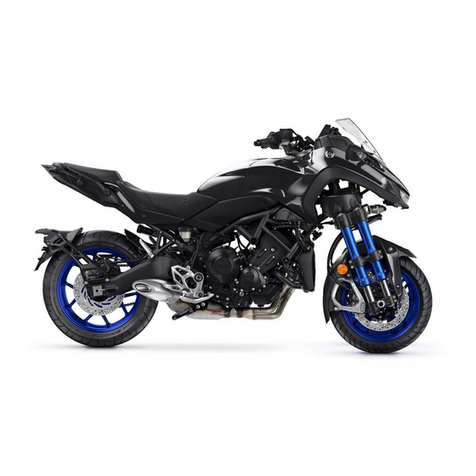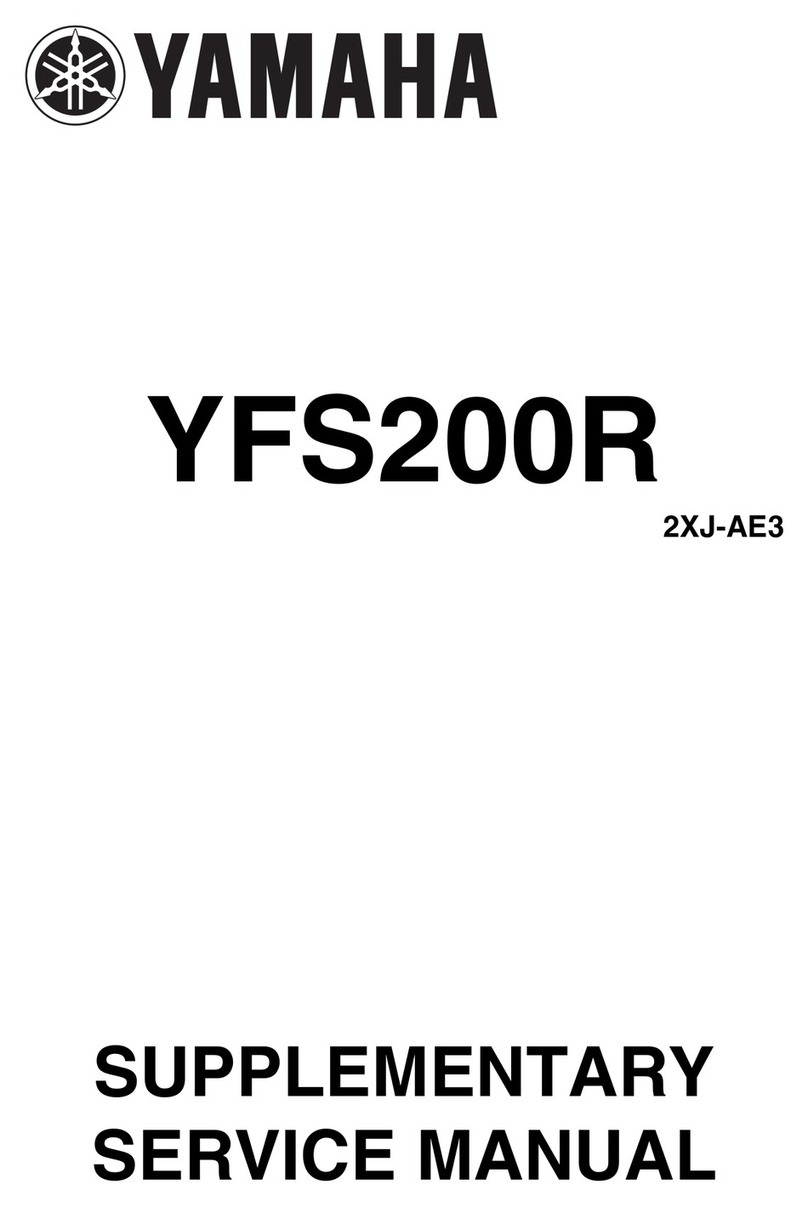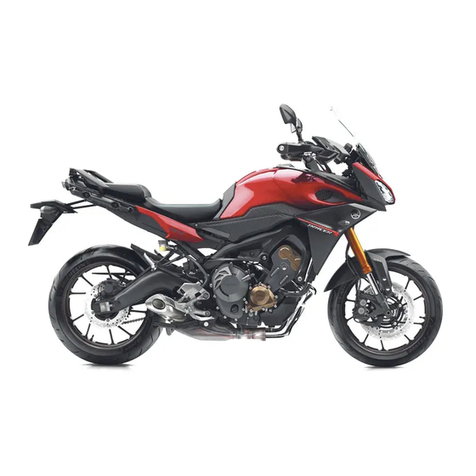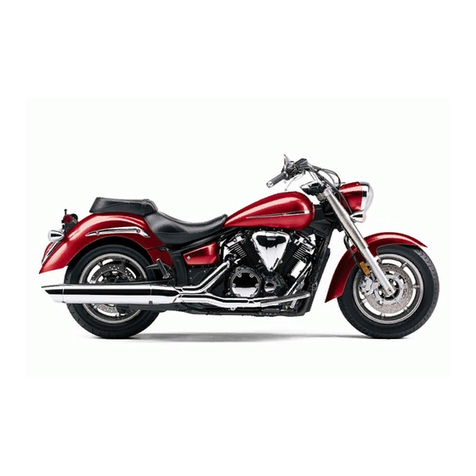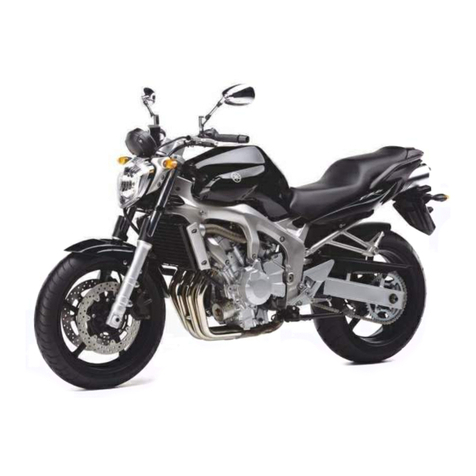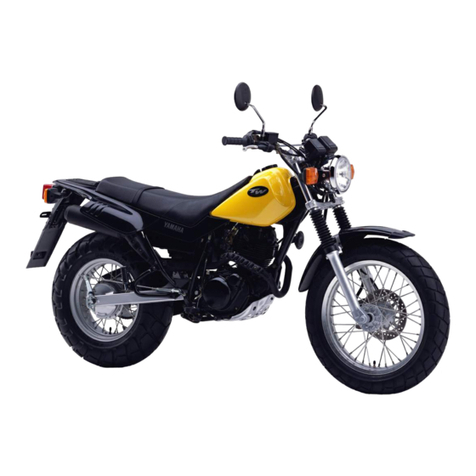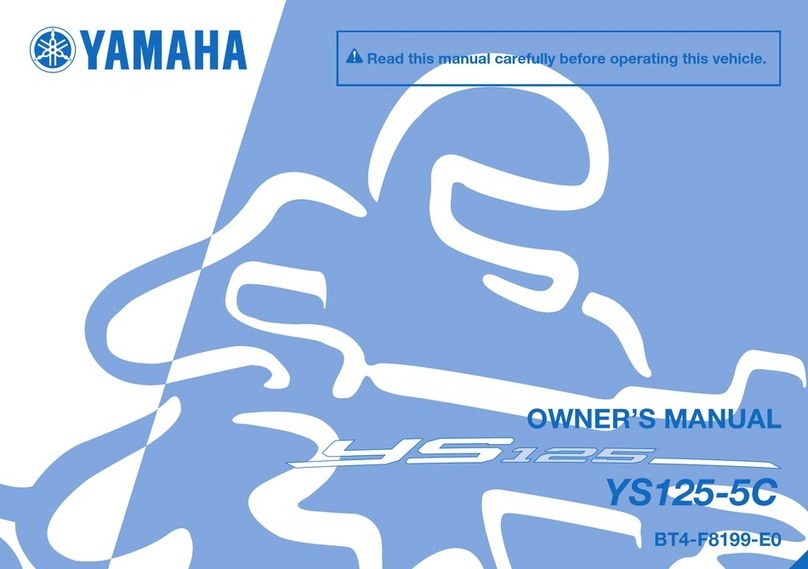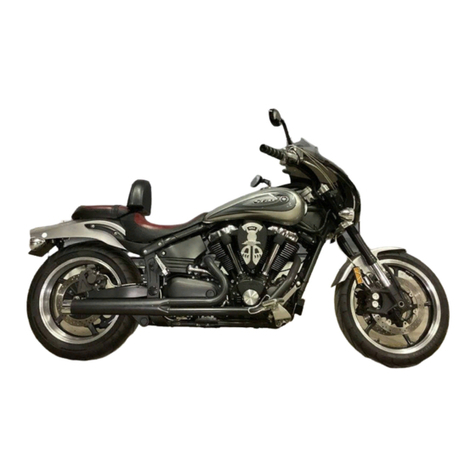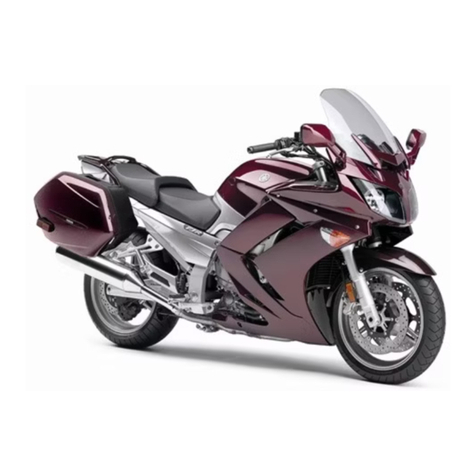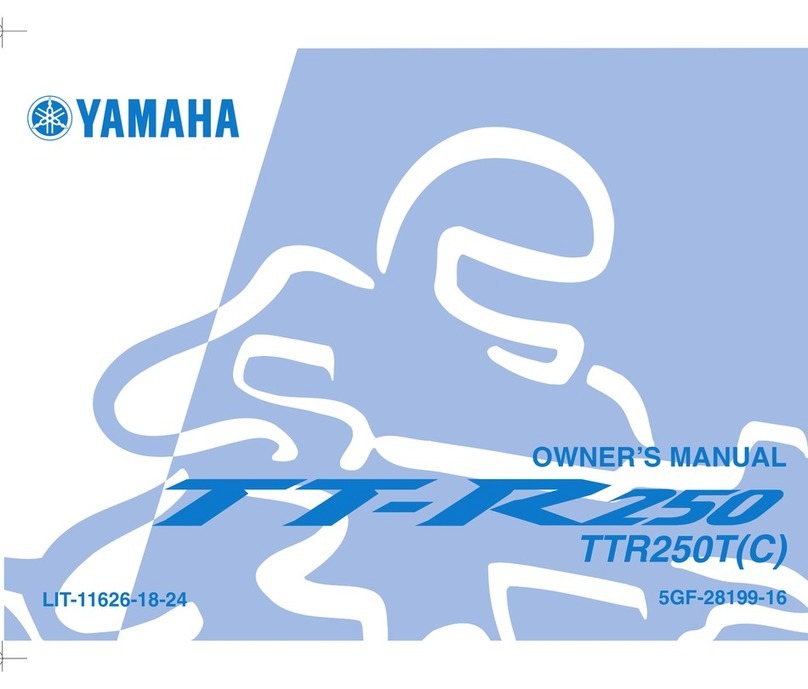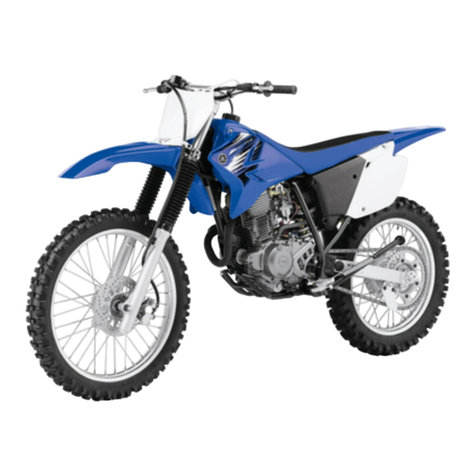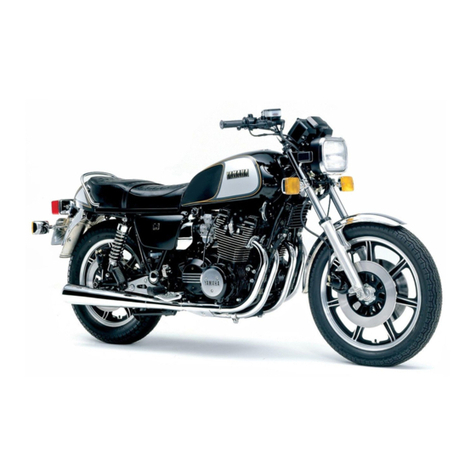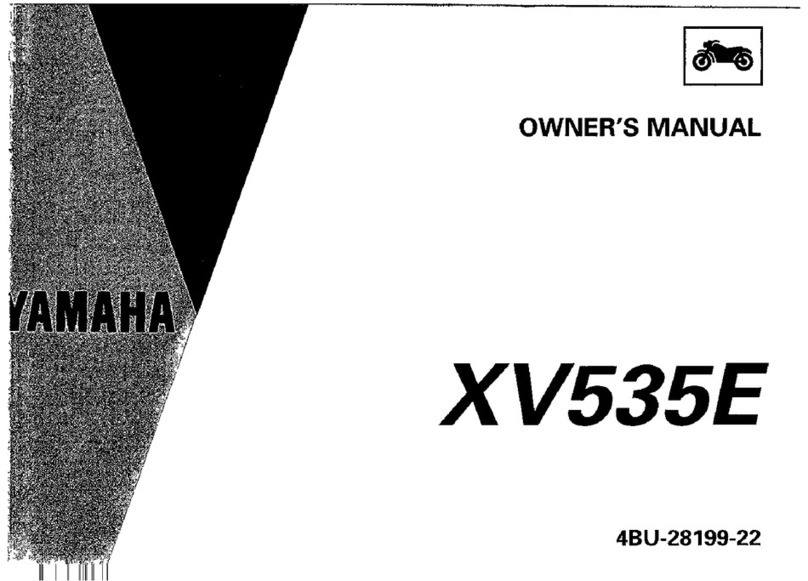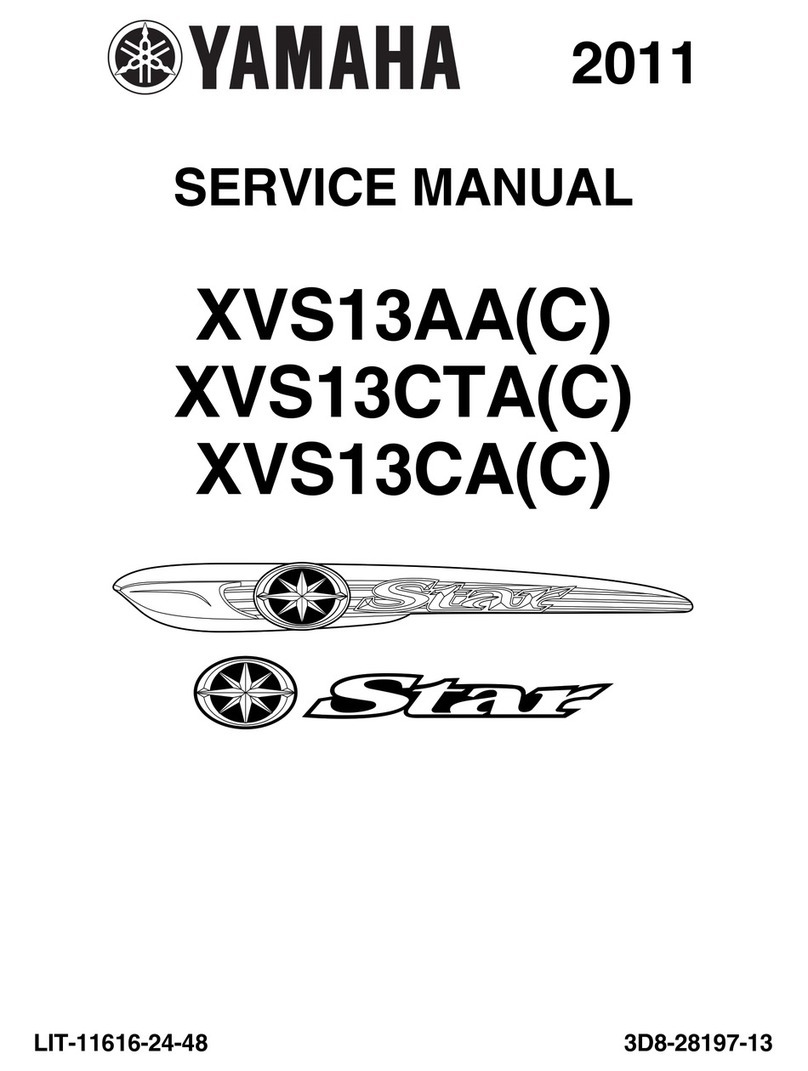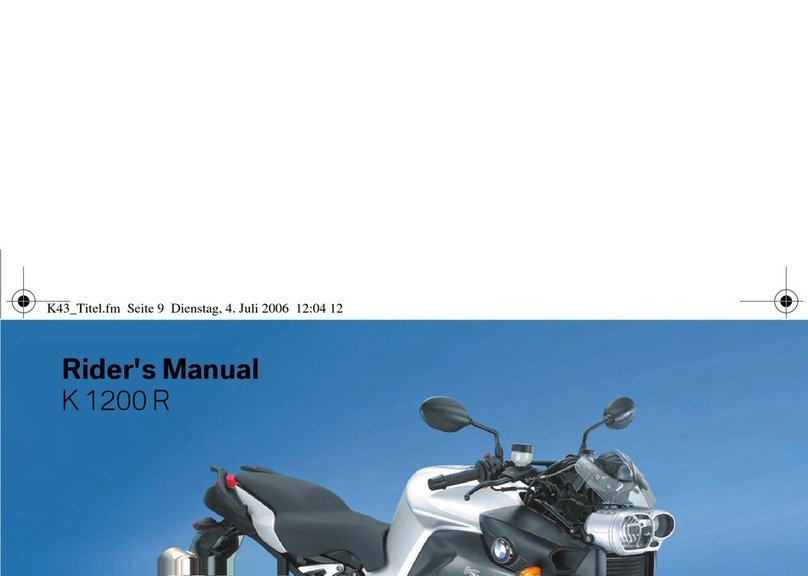
Table of contents
Safety information ............................1-1
Description ........................................2-1
Left view ..........................................2-1
Right view........................................2-2
Controls and instruments................2-3
Instrument andcontrol functions....3-1
Main switch/steering lock ...............3-1
Indicator lights and warning
lights ............................................3-2
Multi-function meter unit.................3-4
Handlebar switches.......................3-12
Clutch lever ...................................3-13
Shift pedal .....................................3-14
Brake lever ....................................3-14
Brake pedal ...................................3-15
ABS ...............................................3-15
Fuel tank cap.................................3-16
Fuel................................................3-17
Catalytic converter ........................3-18
Rider seat ......................................3-19
Sidestand ......................................3-20
Ignition circuit cut-off system........3-20
For your safety – pre-operation
checks ...............................................4-1
Operation andimportant riding
points .................................................5-1
Starting the engine ..........................5-2
Shifting ............................................5-3
Tips for reducing fuel
consumption ................................5-4
Engine break-in ...............................5-4
Parking ............................................5-5
Periodic maintenance and
adjustment ........................................6-1
Owner’s tool kit ...............................6-2
Periodic maintenance chart for the
emission control system ..............6-3
General maintenance and
lubrication chart ...........................6-4
Removing and installing the
cowlings and panel......................6-7
Checking the spark plug.................6-9
Engine oil and oil filter element..... 6-11
Coolant ......................................... 6-14
Replacing the air filter element
and cleaning the check hose..... 6-15
Checking the engine idling
speed......................................... 6-16
Adjusting the throttle grip free
play ............................................ 6-16
Valve clearance............................. 6-17
Tires .............................................. 6-18
Cast wheels .................................. 6-20
Adjusting the clutch lever free
play ............................................ 6-21
Checking the front brake lever
free play..................................... 6-22
Adjusting the brake pedal free
play ............................................ 6-22
Brake light switches...................... 6-23
Checking the front and rear brake
pads........................................... 6-23
Checking the brake fluid level....... 6-24
Changing the brake fluid............... 6-25
Drive chain slack........................... 6-26
Cleaning and lubricating the drive
chain.......................................... 6-27
Checking and lubricating the
cables ........................................ 6-28
Checking and lubricating the
throttle grip and cable ............... 6-28
Checking and lubricating the
brake and clutch levers ............. 6-29
Checking and lubricating the
brake pedal................................ 6-29
Checking and lubricating the
sidestand ................................... 6-30
Lubricating the swingarm pivots... 6-30
Checking the front fork ................. 6-31
Checking the steering................... 6-31
Checking the wheel bearings ....... 6-32
Battery .......................................... 6-32
Replacing the fuses ...................... 6-34
Replacing a headlight bulb ........... 6-35
Replacing an auxiliary light bulb ... 6-35
Tail/brake light .............................. 6-36
UBR6E0E0.book Page 1 Wednesday, August 17, 2016 1:26 PM
